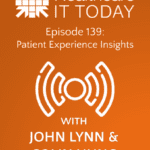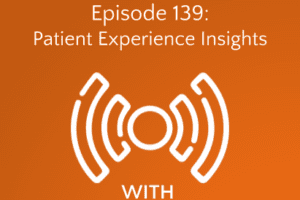The following is a guest article by Zack Tisch, Senior Vice President of Innovation and Life Sciences at Pivot Point Consulting
Medical devices have long existed and added value at points in the healthcare experience. From consumer wearables and smart home devices to point-of-care testing and other technologies used within hospitals and physician practices – these have traditionally existed in silos, capturing and transmitting data with minimal collaboration between providers, specialties, or organizations. Now, healthcare organizations are facing a paradigm shift where it is essential to move this disparate information into an ecosystem where all data captured from the Internet of Medical Things (IoMT), whether at home or in the healthcare facility, is intelligently integrated into patient care workflows to drive improved outcomes.
To enable this shift, it’s crucial for healthcare organizations to create a strategy and infrastructure that will allow them to utilize these inputs in a coordinated way while optimizing patient care workflows to leverage this data.
Transitioning from Silos to Synchronized, Intelligent Data
Many healthcare organizations have started to tap into the data presented by medical devices. However, it is usually piecemealed. A geriatric medicine clinic may use Apple Watch technology to help patients track their heart rate and blood pressure while a bariatrics practice may elect to provide patients with Wi-Fi scales and blood pressure cuffs to monitor their vitals from home during therapy. Often, there is little to no collaboration across these efforts – resulting in redundancies, bloated IT costs, and lost opportunity for synergies.
Conversely, an ecosystem approach considers all sources of important data and integrates them with an enterprise plan that allows any patient with a medical device, like an Apple Watch, to sync their data – allowing it to reach the relevant provider – and connect the dots of their care journey. And even if the data isn’t immediately actionable today, it may be useful in the future, either for research or to drive alternate patient care later on.
To make this shift possible, it’s important to start with a plan, clear roles and responsibilities, and a strategic roadmap. A multidisciplinary team with representation across IT and clinical departments is critical to identify opportunities within the health system to drive improved outcomes. Having prioritized, aligned goals is an important first step to making progress. The next key step is to ensure you have the appropriate architecture and clear governance of what data is stored where, how it is used, and who has access to it. Data cleanliness is critically important in getting provider buy-in to leverage IoMT data in their medical decision-making, and it is imperative that IT departments display that data accurately in the appropriate EMR workflows.
Workflow Considerations are Essential
Provider burnout continues to rise, with research published in the Mayo Clinic Proceedings concluding that 62.8% of physicians had experienced burnout at least once in 2021, and the World Health Organization estimates that healthcare staffing shortages will reach 10 million by 2030. As a result, many healthcare providers are struggling to do more with less, which means deep consideration of how IoMT integrates into the provider workflow is essential. The data presented by IoMT must be actionable and useful within that workflow, otherwise, it will be received as an annoyance or hindrance to providing quality care, which will negatively impact adoption rates of systemic changes. More data only drives better outcomes when it is intelligently presented to the right clinician, at the right time, to take the right next action.
Grappling with Data Privacy, Security, and Regulations
Beyond how an ecosystem approach to utilizing data from IoMT will fit into the provider workflow, the biggest concerns are data privacy, security, and the ever-changing regulatory landscape around IoMT. Health systems may not yet have robust policies, procedures, and governance models to oversee this newer data stream, and clinicians may need education on the impact of workflow and any changes in the system. Privacy and security start with each user, so it is critical for staff to understand how to identify and avoid privacy or security issues, such as ransomware or phishing attempts.
Today’s Challenges Create Tomorrow’s Opportunity
As more healthcare organizations shift to an ecosystem approach, this creates a new challenge – and opportunity – for additional telehealth adoption including hospital-at-home services. Leveraging the data provided by IoMT presents the opportunity to bend the cost curve by providing higher levels of care outside the hospital, as well as enabling technologies to exchange data and work together in real-time. The right system and infrastructure in place enables providers to access that information and parse the data that is required to make their digital health offerings and hospital-at-home evaluation programs even more effective.
With the right strategy, how healthcare organizations approach IoMT is the first step down an important path that will improve care delivery and reduce costs for patients and providers.
 About Zack Tisch
About Zack Tisch
Zack Tisch is the Senior Vice President of Innovation and Life Sciences at Pivot Point Consulting. A dynamic healthcare technologist, Zack has more than 18 years of experience in leading complex, integrated healthcare information technology projects at some of the nation’s leading healthcare institutions, such as Cedars-Sinai, Stanford Health Care, UCLA Health, and MD Anderson Cancer Center. A former Epic employee certified in 15 Epic applications, Zack is also a certified Project Management Professional (PMP) with extensive experience in project management, advisory services, and strategy. His work has been recognized and featured in publications including Becker’s Hospital Review, HISTalk, HealthTech Magazine, Healthcare IT Today, and more.













